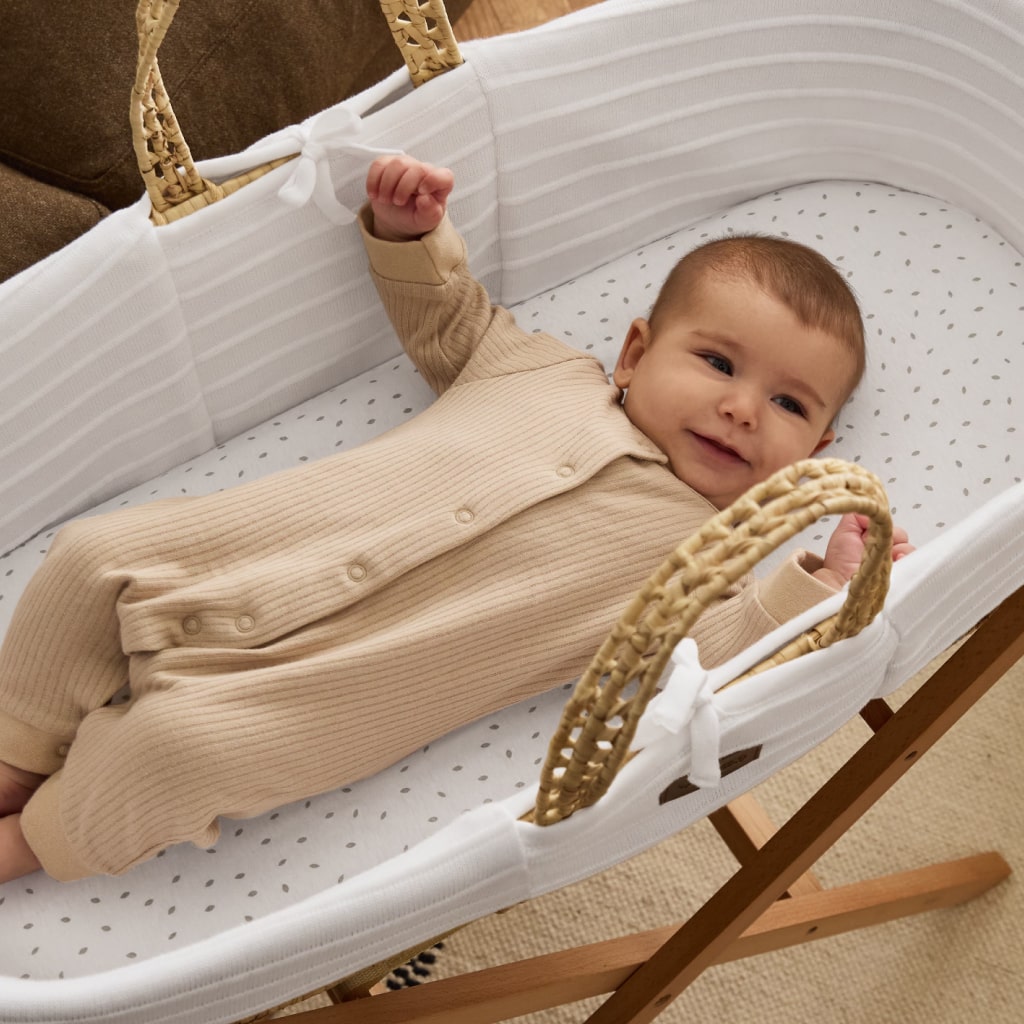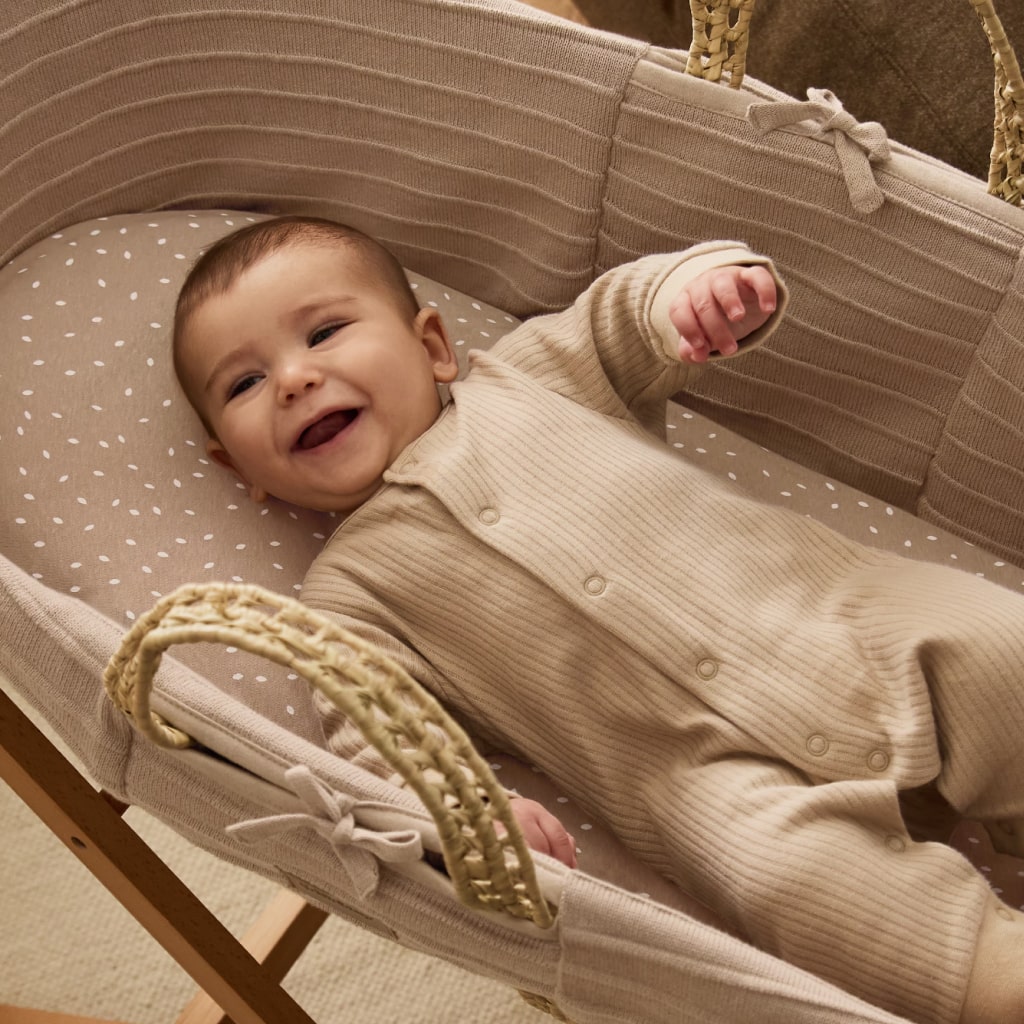A Guide to Childproofing Drawers: How to Do it & Why It's Important
As you prepare for the arrival of your little one, childproofing drawers should be one of the top tasks on your to-do list.
As babies grow and become more mobile, they’re naturally curious and love to explore their surroundings. This includes opening drawers and cabinets, which can potentially lead to dangerous situations.
But childproofing drawers is not just about keeping your little one safe. It's also about creating a peaceful and stress-free environment for both you and your baby.
By taking the necessary steps to childproof your home, you can have peace of mind knowing that your little one is safe while also reducing any potential hazards in your home.
There are several ways you can childproof drawers in your baby’s nursery and other rooms round your home, which we’ll take you through in this guide.
What Age Do You Need to Childproof Your Home?
There is never too early a time to start childproofing drawers and other areas of your home; some parents choose to do it even before their child can crawl around.
But typically, you should look to start babyproofing your home when your little one reaches around 6 months old.
By this point, your baby will likely have started to become more mobile, which might involve rolling, crawling, or even some light walking.
You should then keep your childproofed measures in place until they are old enough to understand and follow safety rules, which is usually around the age of 4 or 5.
However, every child is different, so it’s important to constantly reassess their development and adjust your childproofing accordingly.
Why It's Important to Childproof Drawers in Your Home
Childproofing drawers becomes crucial as your baby starts to crawl and walk. At this stage, children become curious and eager to explore their surroundings.
This new mobility means previously out-of-reach areas, like drawers and cabinets, become accessible and enticing.
Here’s why childproofing drawers is vital during this period:
Making your home safe for your growing baby keeps them out of harm's way and lets them explore and grow in a safe environment. Childproofing your drawers creates a safe space where you and your child can both thrive.
Read More: New Parent Advice: 9 Tips From Our Baby Experts

How to Childproof Your Bedroom Drawers
Childproofing drawers in your bedroom should be a top priority, especially as your little one should be sleeping in the same room as you for their first 6 months.
As your child becomes more curious about their surroundings, they’ll start looking to drawers and cabinets for their next adventure. This is why it's important to secure your bedroom drawers early on.
By securing your drawers, you reduce the risk of:
You can follow these steps to ensure your drawers are secure:
1. Install Drawer Locks
Various types of childproof locks are available, including magnetic, adhesive, and pull-cord designs. Choose one that suits your furniture and follow the manufacturer's instructions for installation.
2. Use Corner Guards
To enhance safety in your home, attach soft corner guards to the edges of the drawers. These guards help prevent injuries from sharp corners for children who may be more vulnerable to accidental bumps.
3. Keep Hazardous Items Out of Reach
Store items such as medications, sharp objects, or small items that can be swallowed in higher drawers or secure cabinets out of a child’s reach.
This is extremely important because it only takes a few seconds for a child to get into dangerous items and cause harm to themselves.
You might even want to just completely remove these objects from the drawers and store them somewhere else, like in a kitchen cupboard where children cannot reach.
How to Childproof Nursery Dresser Drawers
When your little one moves into their own room, you should make sure any dressers or drawers in their nursery are also babyproofed.
This is especially important as this is the stage in their life when they’ll start to become much more mobile and curious about their surroundings. As they learn to crawl and walk, they will naturally want to investigate every nook and cranny of their room, including the dresser drawers.
Your child will likely spend significant time exploring and playing in their nursery, and unsecured drawers can pose various risks. By thoroughly childproofing your nursery dresser drawers, you create a more secure environment that encourages safe exploration and play.
What Age Should Baby Move From Moses Basket to Cot?
1. Use Safety Straps & Anchors
Safety straps and anchors are effective tools to prevent tipping. By securing the dresser to the wall, you reduce the risk of your child pulling the furniture over, which could lead to serious injuries.
These devices are easy to install and provide peace of mind, knowing that your nursery fittings are stable.
2. Implement Childproof Drawer Locks
Childproof locks are essential for preventing little hands from opening drawers and potentially finding hazards or trapping their fingers.
Magnetic locks are a popular choice due to their effectiveness and discreet appearance.
3. Store Nursery Essentials Safely
Ensure that all nursery essentials, such as nappies, wipes, and clothing, are stored in accessible drawers, while potentially dangerous items like lotions and medicines are kept in higher, locked drawers, or out of the nursery.
4. Regularly Check & Adjust Safety Measures
Babies grow and develop rapidly, which means their ability to reach objects evolves quickly. Regularly check that all safety measures are still effective and adjust as necessary.
Periodic inspections help ensure that your child remains safe as they grow more curious and capable.

How to Childproof Kitchen Drawers
As your child grows, they’ll start to expand their exploring to other parts of the house other than their nursery or your bedroom. Childproofing the kitchen is another key area to focus on, especially since mealtimes will now involve your little one joining you at the table.
Here’s how you can effectively childproof your kitchen and kitchen drawers & why it’s important:
1. Install Childproof Locks
Just like in the bedroom, installing childproof locks on kitchen drawers is essential. Choose from various options, such as magnetic locks, adhesive locks, or latch-based locks, to find one that best suits your kitchen layout.
These locks will prevent children from easily opening the drawers and accessing harmful items inside.
2. Store Hazardous Items High
Ensure that items such as knives, heavy utensils, and chemicals are stored in higher, out-of-reach drawers or cabinets. For added safety, you can also use lockable cabinets for these items.
3. Use Safety Latches for Drawers
Safety latches are an easy-to-install option that can be retrofitted to your existing drawers. These latches allow you to open the drawer only partially, making it difficult for children to access the contents fully.
4. Clear Unused Items
Remove unnecessary items to keep kitchen drawers decluttered. A clutter-free drawer not only makes it more challenging for a child to encounter dangerous objects but also helps you maintain an organised space.
5. Educate Older Children
If you have older children, teach them about the dangers of certain kitchen items and the importance of keeping the drawers secure for the younger ones. Educating children can foster a collaborative effort in maintaining a safe environment.
By taking these childproofing steps, you can transform your kitchen into a safer place for your little ones, allowing them to explore their surroundings without unnecessary risks.

Simple Options for Childproofing Drawers & Cabinets While Travelling
It’s not just your own home that you need to think about babyproofing, but any holidays or trips you take with your child as well.
For example, staying in an Airbnb or hotel, or even visiting friends and family who may not have childproofed their home, can present new challenges.
Here are some straightforward and portable solutions to childproof drawers and cabinets during your travels:
By using these easy and effective childproofing solutions, you can travel with greater peace of mind, knowing your baby is safe and secure even in new environments.
Read More: Infant Home Safety Checklist
Key Takeaways: Keeping Your Baby Safe in Your Home
Using appropriate drawer and cabinet locks is essential for keeping your baby safe at home and when travelling. These simple yet effective tools prevent access to hazardous items, reducing the risk of injuries and accidents.
By installing childproof locks and regularly checking their functionality, you provide a secure environment where your little one can explore safely, giving you peace of mind.
For more advice and tips for making your home a safe haven for your little one to thrive in, check out The Little Green Sheep’s Journal.
FAQs
The best way to baby-proof drawers is by installing childproof locks, such as magnetic or adhesive options. Ensure hazardous items are stored out of reach in secure, higher drawers. Regularly inspect and adjust safety measures to match your child's growing abilities.
Babies typically begin to open drawers between 6 to 12 months as they become more mobile and curious. This developmental stage highlights the importance of childproofing to ensure their safety and prevent access to potentially dangerous items.
To baby-proof drawer knobs, use childproof knob covers that fit over the knobs and prevent little hands from gripping them. Alternatively, install adhesive drawer locks or ties to secure the drawers. These solutions ensure that drawers remain closed and inaccessible to curious toddlers.
DIY childproofing solutions can be effective in an emergency, but they're not as secure as proper childproofing solutions like magnetic locks or latches. We recommend only using DIY methods when you're in a pinch.


